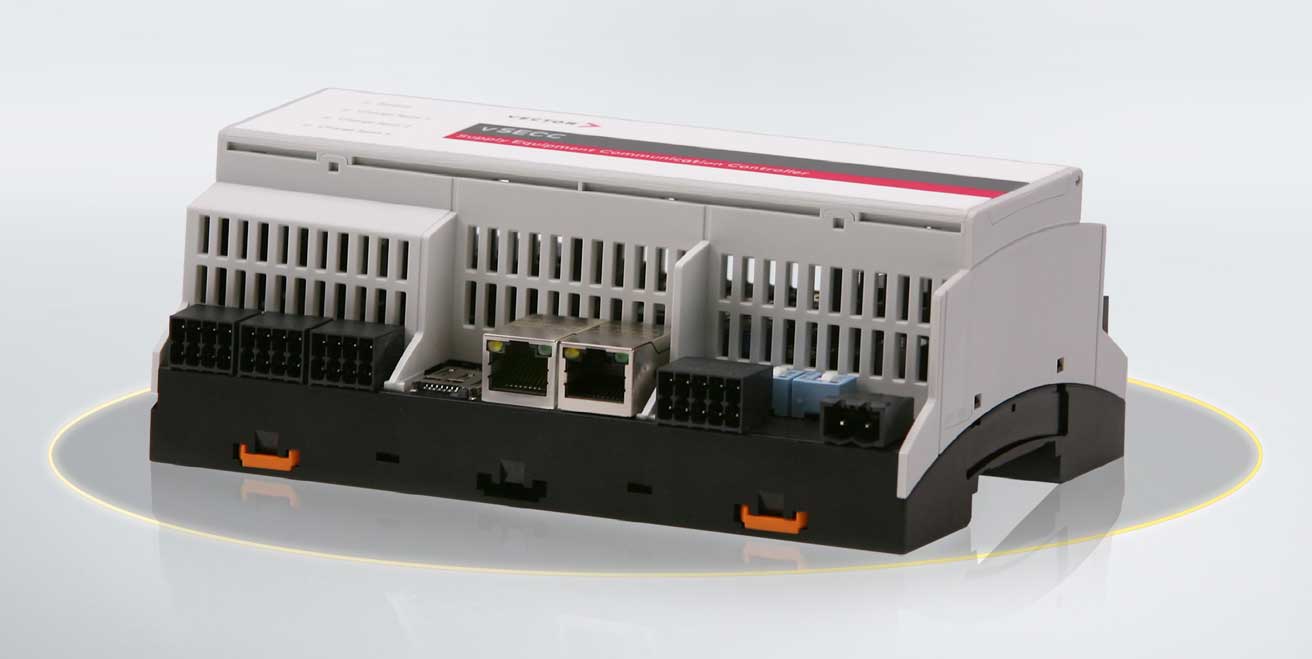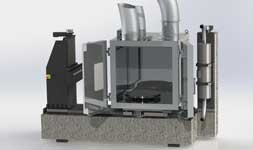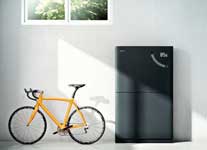Intelligent DC charging station: the control unit takes over the charging function
- Details
- Hits: 8295
Vector simplifies the development of the intelligent DC charging station for Electric Cars. In the area of DC fast charging, the new VSECC control unit takes over all communication and control functions in the charging station. This future-proof solution enables developers of smart charging stations to completely control and monitor the charging process with just one device. The controller controls the Communication with electric car and back end as well as the power Electronics.

The charging station controller VSECC (Supply Equipment Communication Controller) is a control device mass-produced by Vector that controls and monitors all charging communication to the electric cars. With it, developers now only need one device for communication between the charging station and the electric car and back-end and for controlling the power electronics via CAN or Ethernet. Until now, several devices were required for this.
The main functions of a DC charging station consist of communication with the E-car while charging, monitoring the continuous e-car connection and controlling the power electronics depending on the vehicle requirements. The Vector controller takes on all of these functions.
 Battery storage systems are worthwhile in the stress test
Battery storage systems are worthwhile in the stress test
It offers enormous potential for the faster expansion of the charging infrastructure by reducing development time. The control unit has the interfaces and computing power to completely control the charging station. There is no need for an additional controller, intelligence for controlling when charging. This saves space in the charging station and reduces the effort involved in integration and installation. Developers and manufacturers of charging stations for electric cars benefit significantly from this development.
Controller as the heart of the DC charging station
The controller controls via the hardware interfaces CAN and Ethernet connects and monitors the power electronics required for DC charging in the charging stations. This gives manufacturers and developers of charging cables, equipment and devices great freedom when selecting the power electronics. In addition, they can address all functions - in addition to the important electrical safety functions such as securing and monitoring the vehicle contacts.
Thanks to the integrated Hardware monitoring a dangerous voltage can be switched off very quickly in the event of a fault. The control unit communicates with the electric car, power electronics and user interface. All peripheral components such as Sensors, RFID readers and smart meters in the charging station are connected directly to the controller. This makes the control unit the heart of every DC charging station.
Innovation boost for electromobility
Also manufacturers of power electronics in the field of Renewable energy like Photovoltaics benefit from this control for charging stations. Because on the basis of today's technology, a DC charging point can be easily implemented with VSECC, as the practical application of the Bochum University of Applied Sciences shows. In a pilot project there, a mobile charging container for electric cars is being built that has photovoltaic cells on the roof and a charging connection.
 Battery storage for self-generated electricity in homes
Battery storage for self-generated electricity in homes
Because that Controller can be integrated quickly and easily, the charging container is ready for use in a short time. This innovative application, as well as other pilot projects, shows a high potential for industrialization, which can give electric mobility as a whole a significant boost.
The VSECC controller for charging stations can be delivered within a week. It can be installed in any DC charging station with little effort. Vector is currently also working on a compact VSECC version with the dimensions 114,5 mm x 27 mm x 99 mm. With this, the manufacturer wants to meet the increasing demand for small DC charging stations with a charging connection for private and commercial garages and parking spaces.
